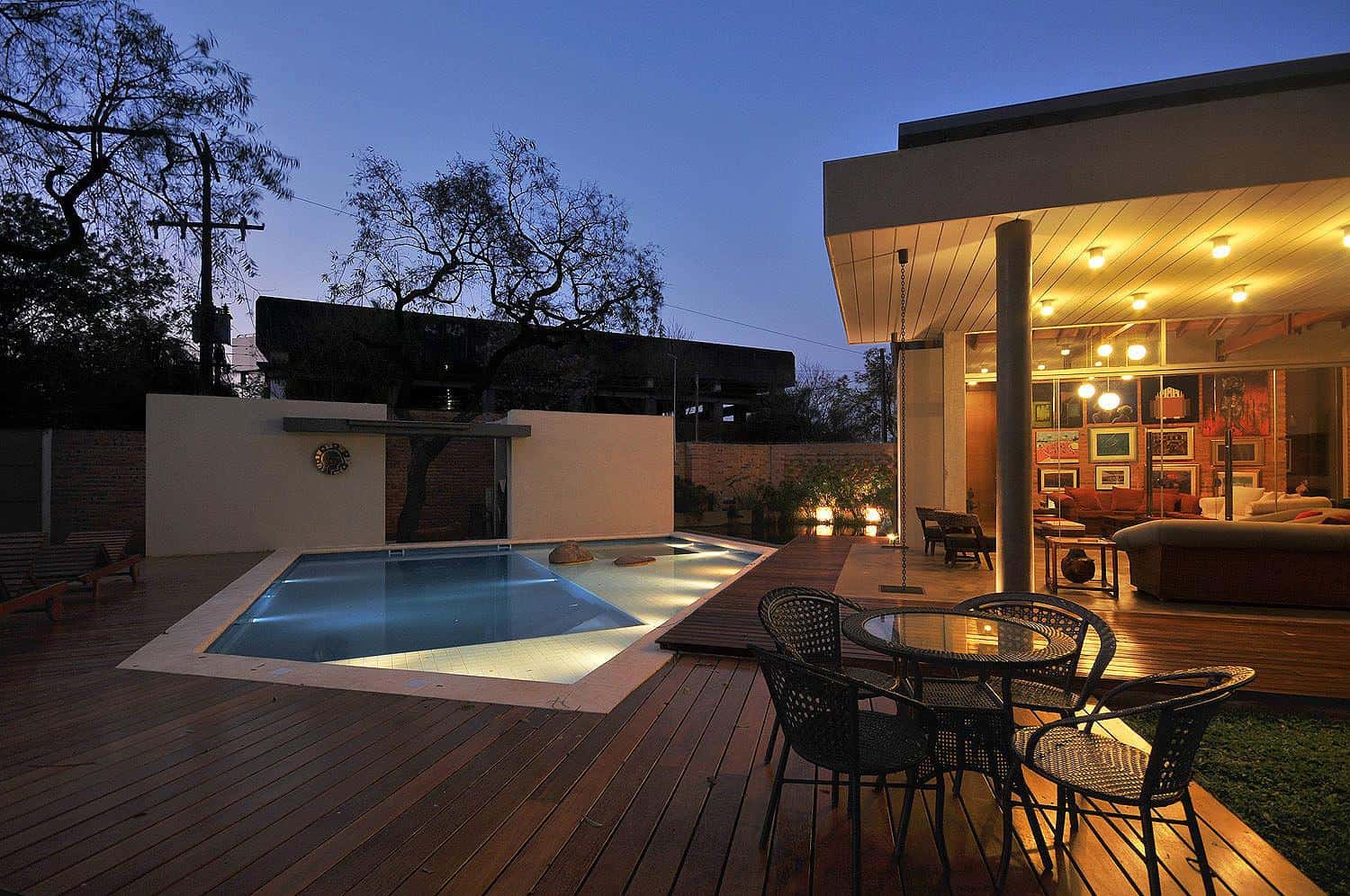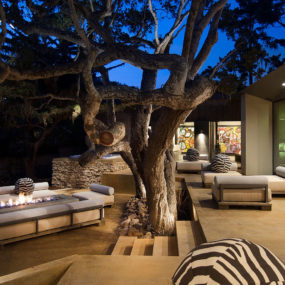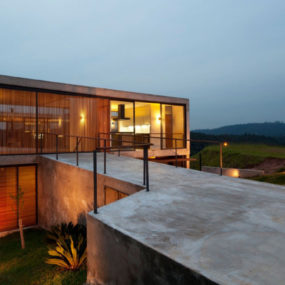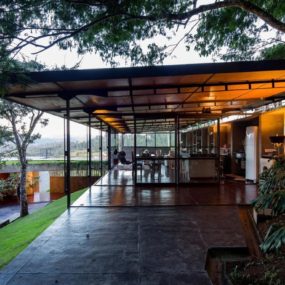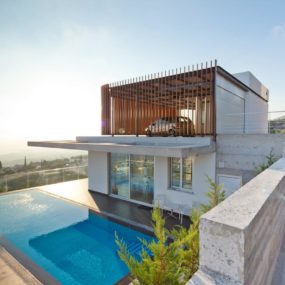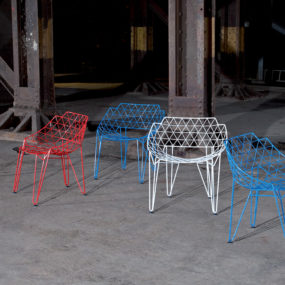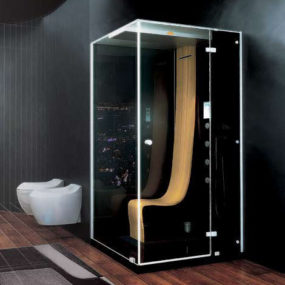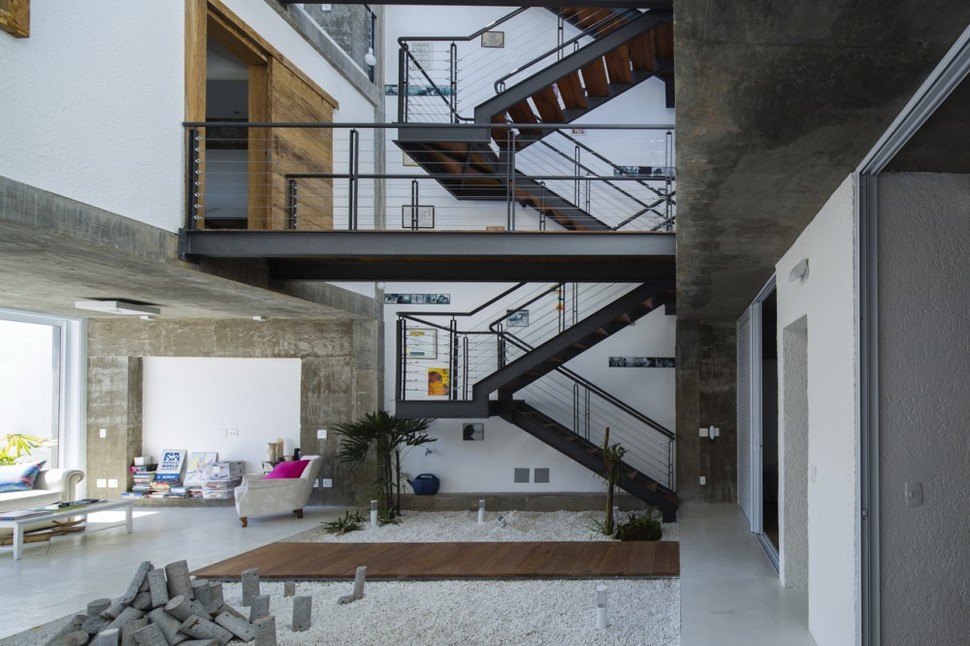
Built among much more traditional houses in Sāo Paulo, this tall contemporary residence certainly stands out among its neighboring Brazilian bungalows. Designed by local firm Arquitetura Bonina, the striking residence features right-angled architecture on the outside and a truly impressive courtyard soaring up through its center. Punctuated by a tall tropical tree, the house is centered on this courtyard, with transit spaces floating through the air underneath huge skylights. The spacious and sunny inside of the house makes up for the privacy necessary due to building in a crowded area, a direct contrast to the fairly closed-off exterior architecture. Built on a slope, it features a lower level with only one open edge and bedrooms places along its most private side. The interior is arranged vertically backwards to tradition, its rooms becoming more public as its profile rises.
The house is built on a lot previously occupied by a smaller brick residence, and two weathered brick walls are retained (one on each side of the house). Aside from that touch of brick, the rest of the house’s actual structure is done in two hues of concrete, about half unfinished and the other half a fire-invoked white coloration. A medium-tone wood creates visual definition for doorways, artistic decor, and the pathways between rooms and levels. Each individual room is given its own differing personality through the coloration of its furniture and the ratio of white and grey concrete.
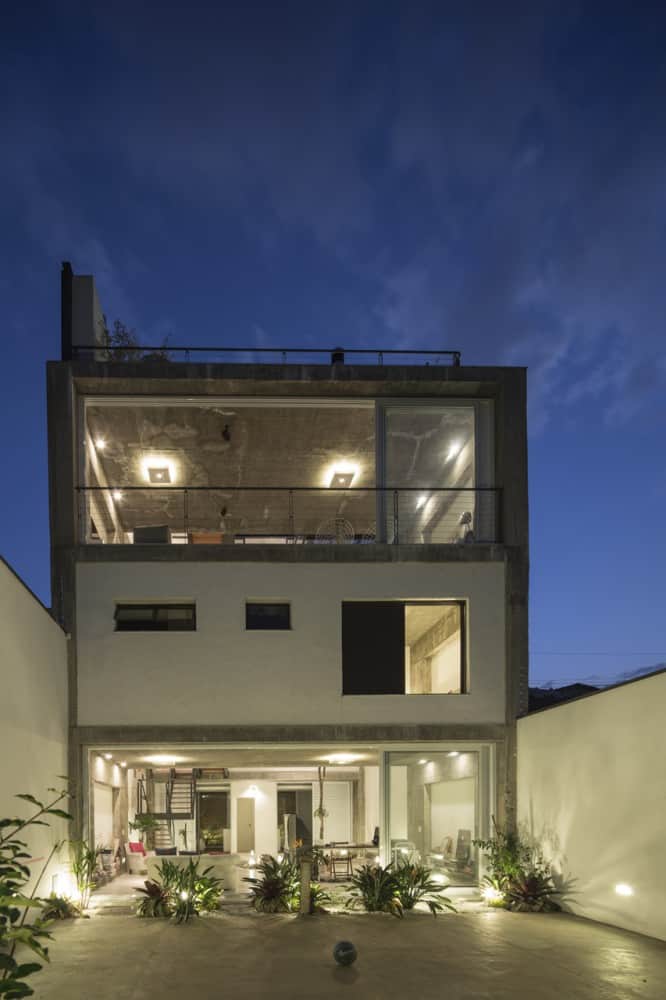
Spanning four floors of living space, this Sāo Paulo residence is constructed mostly of various colors of concrete. Unfinished sections are contrasted with white-burnt cement areas, with further accent from well-placed lighting.
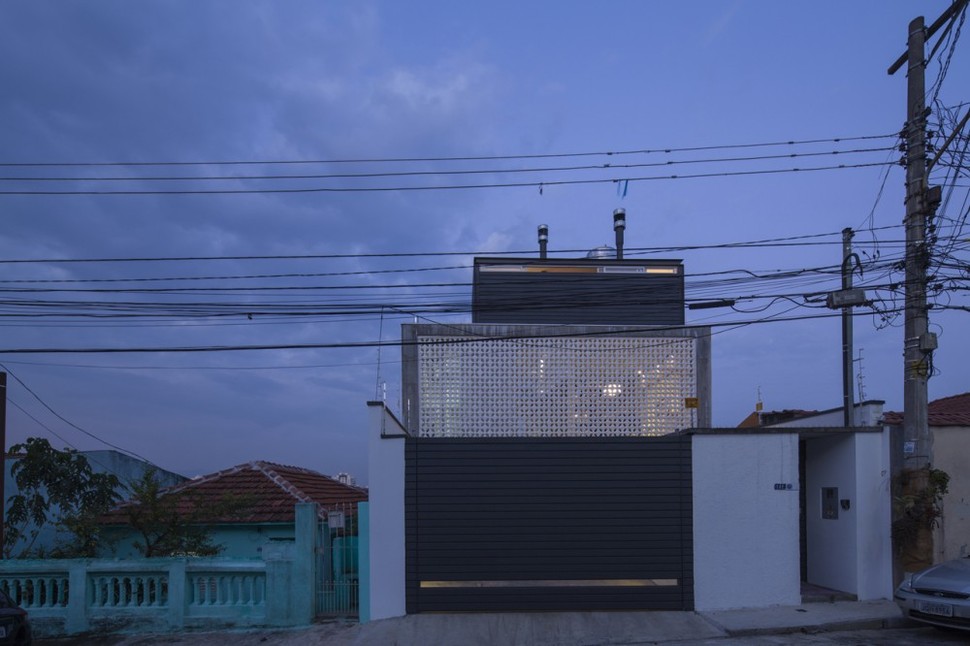
On its street side, the privacy of those inside the residence is almost entirely preserved. A large garage door conceals the front of the property, a decorative mesh serves in place of windows to let in light while obscuring the inward view of the second floor, and the only windows up top are thin slats.
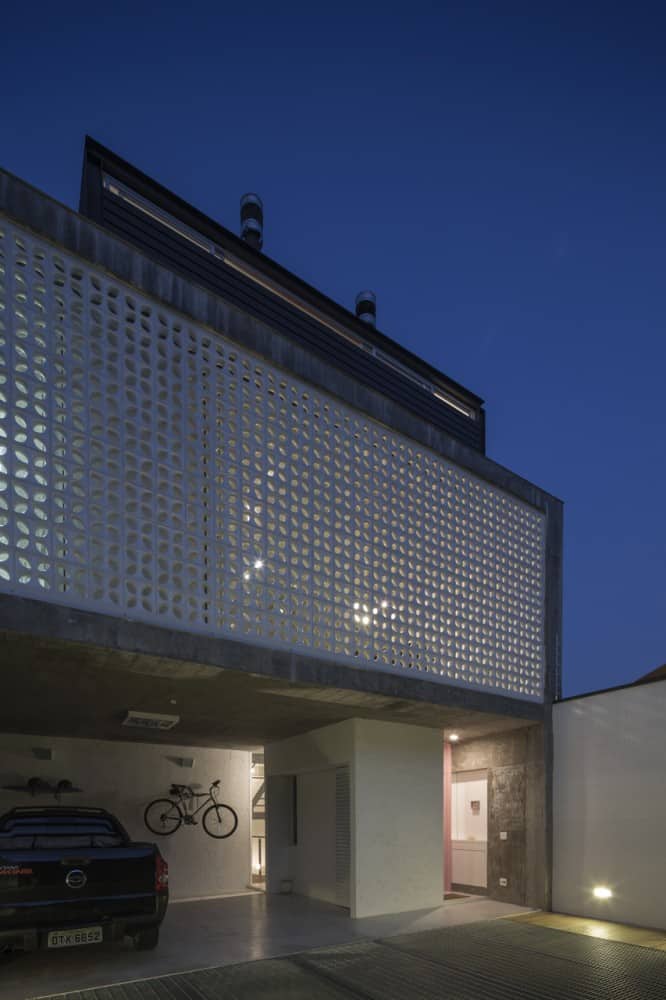
Inside the property gate, a carport sits underneath a portion of the second floor. The dwelling’s main interior entrance, to the right of the carport, is clean and separated by a utilities closet that forms a rectangular column near one edge of the space.
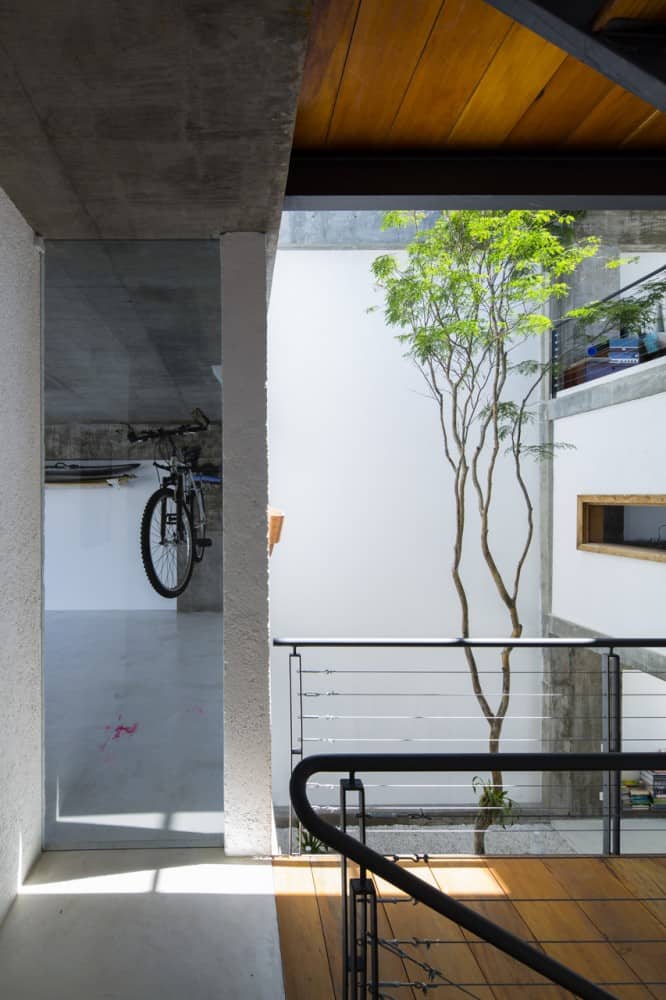
A step “inside” the house is actually almost just another step outdoors, revealing the super-open arrangement of its interior rooms.
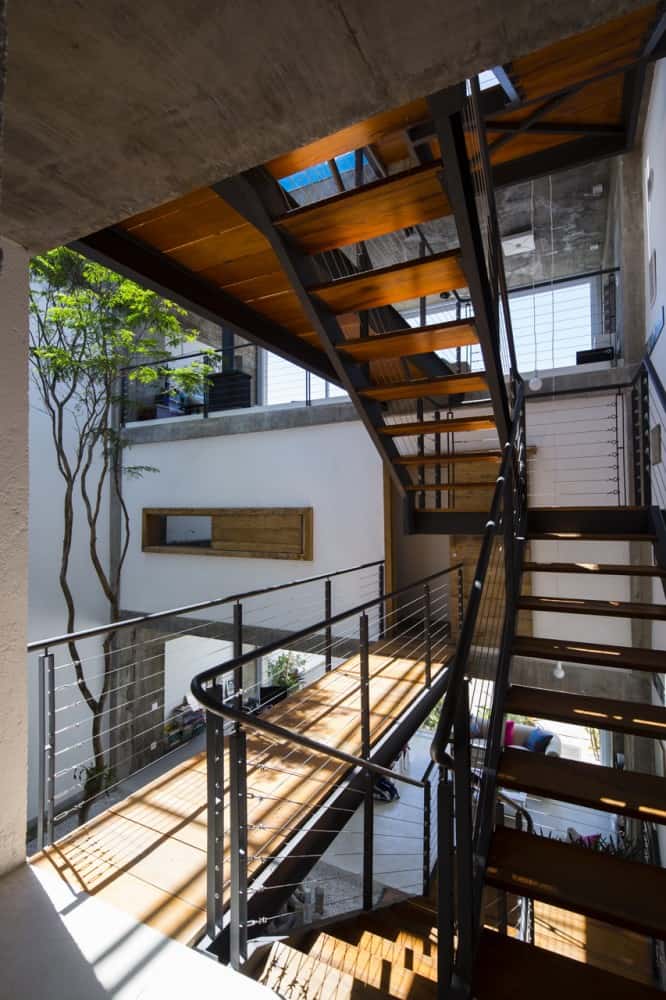
A six-flight staircase along the entrance edge of the residence connects all four floors of living space, but the arrangement of every room around a wide open space demands a bridge or path on each floor spanning the air between rooms at the front and rear.
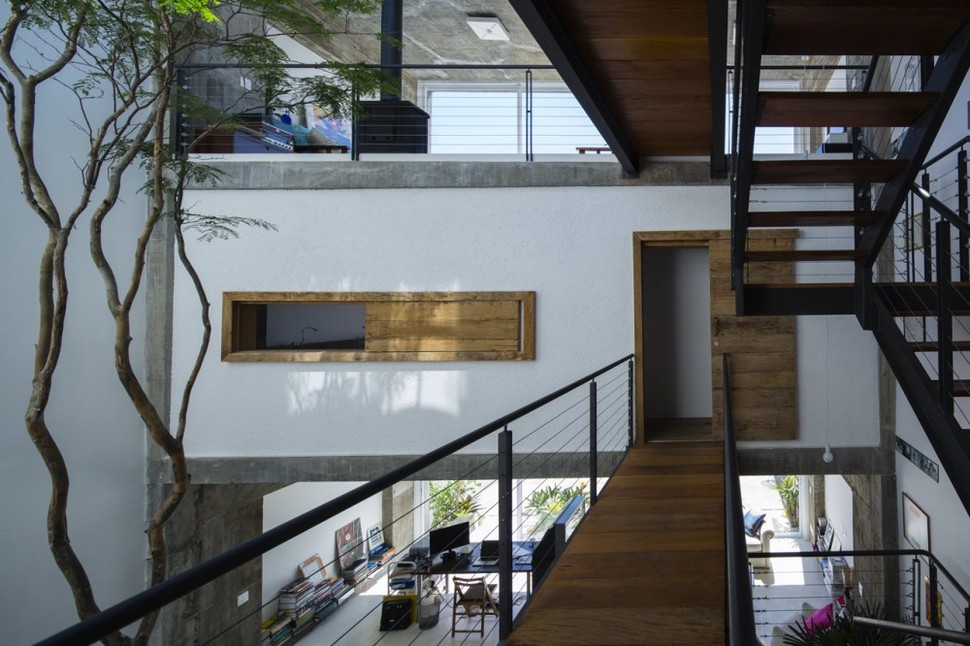
A fully-enclosed second-floor room across from the entry hallway at the rear of the home provides definition both inside and outside, giving vertical symmetry and setting the vertical borders for the rooms above and below.

The central feature of the entire house is a super tall, thin tree springing up from a social courtyard at the building’s base. Wide, arched skylights to feed the tree bring in nearly infinite light to all the rooms which border its path upward.
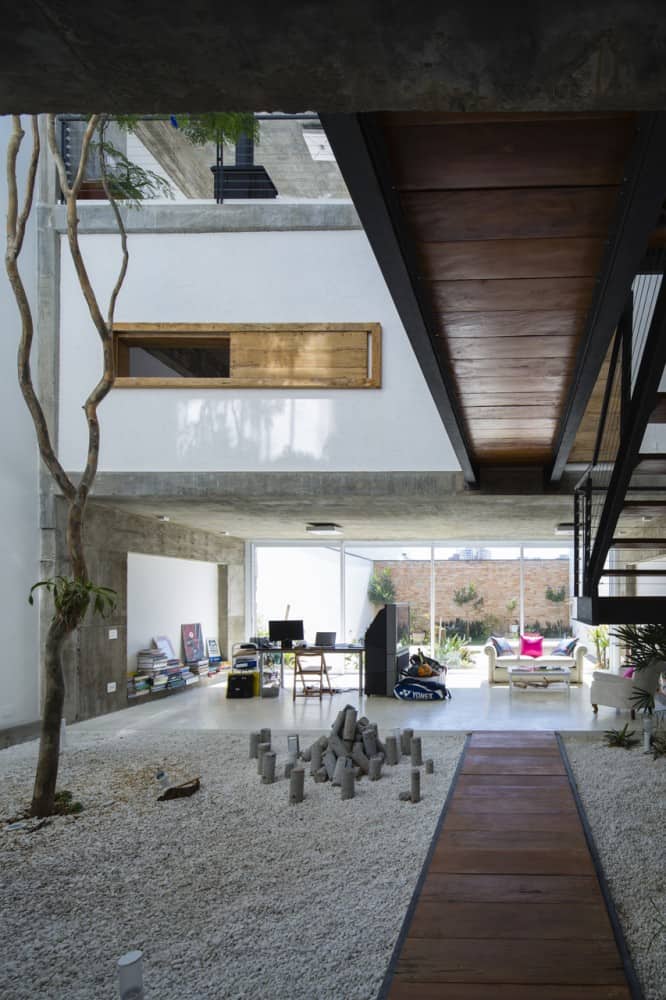
The ground floor, open to the outside only on one edge because of the hillside nature of the home’s lot, contains the tree’s courtyard, private bedrooms, a low-key living room, and a second indoor/outdoor garden area.
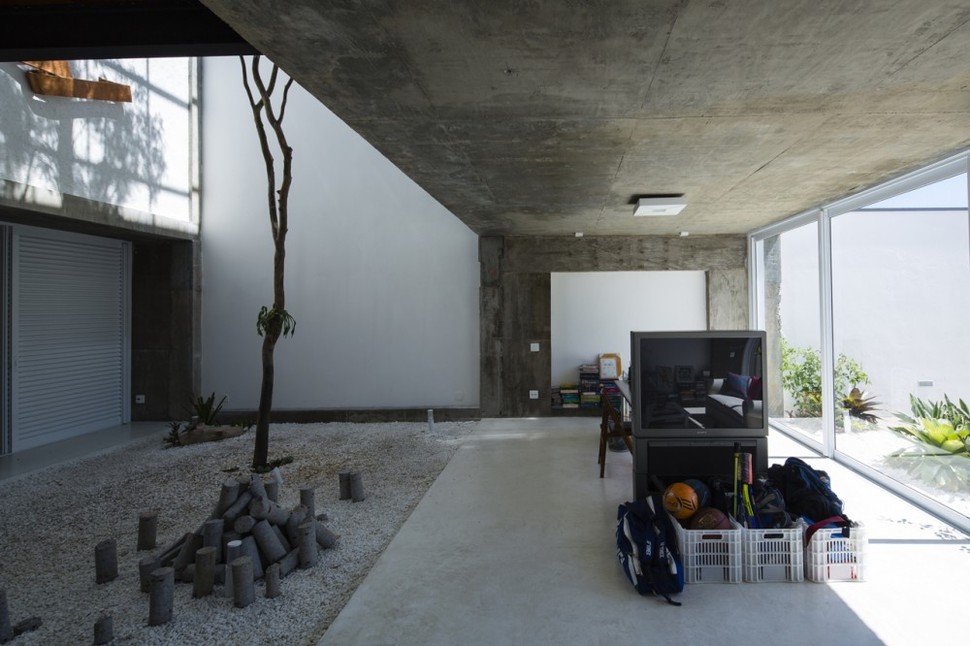
Unfinished concrete covers the walls and ceilings of most of the spacious dwelling’s private rooms, creating a contrast with the brighter tones which dominate elsewhere. These dark finishes help separate each room without the need for a physical barrier at its entrance.
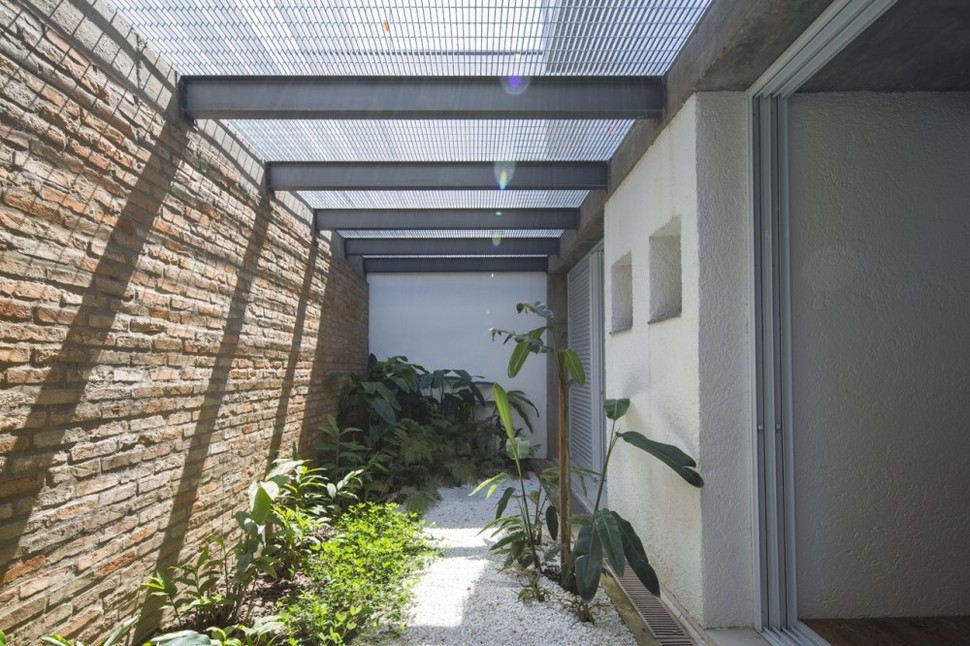
With its own skylight made from metal grilles, the small garden set against one of the property’s original two brick walls seems like a microcosm of the main courtyard.
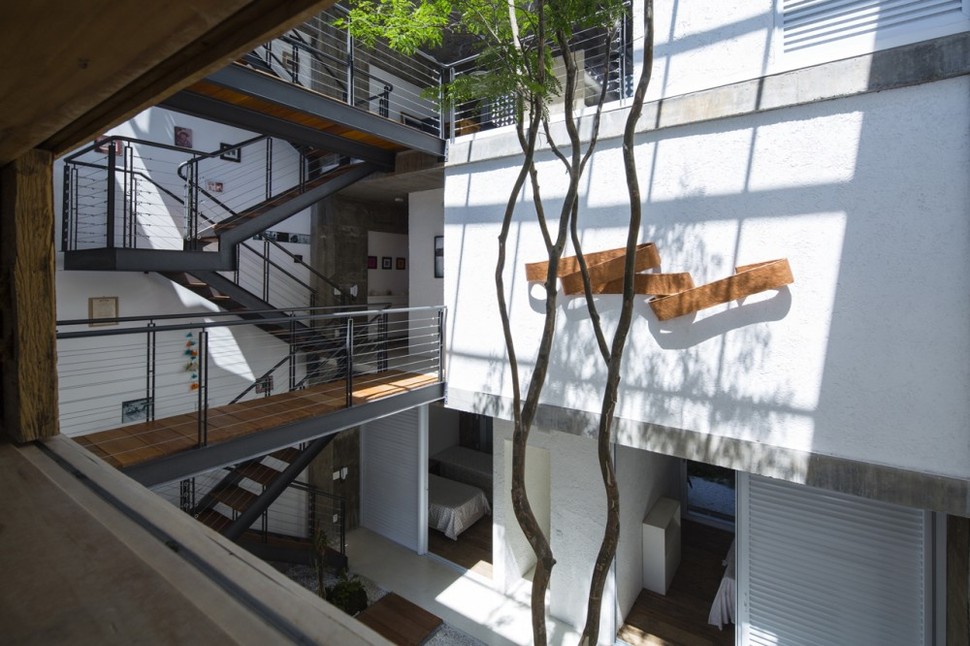
An artistic flourish done in the same wood as the home’s walkways and doors helps to break up white space along the garage wall on top of the bedrooms.

Set in a small alcove in the concrete just down the hall from the house’s main entrance, a small set of cabinets displays art pieces and provides a mirror for those leaving to work, to school, or on errands.

Ascending to the third floor, public rooms like the kitchen and living room becomes accessible opposite each other. The residence is laid out seemingly upside-down to tradition, with private rooms on the very bottom, entertaining spaces in the middle, and a rooftop deck taking the place of a traditional yard.
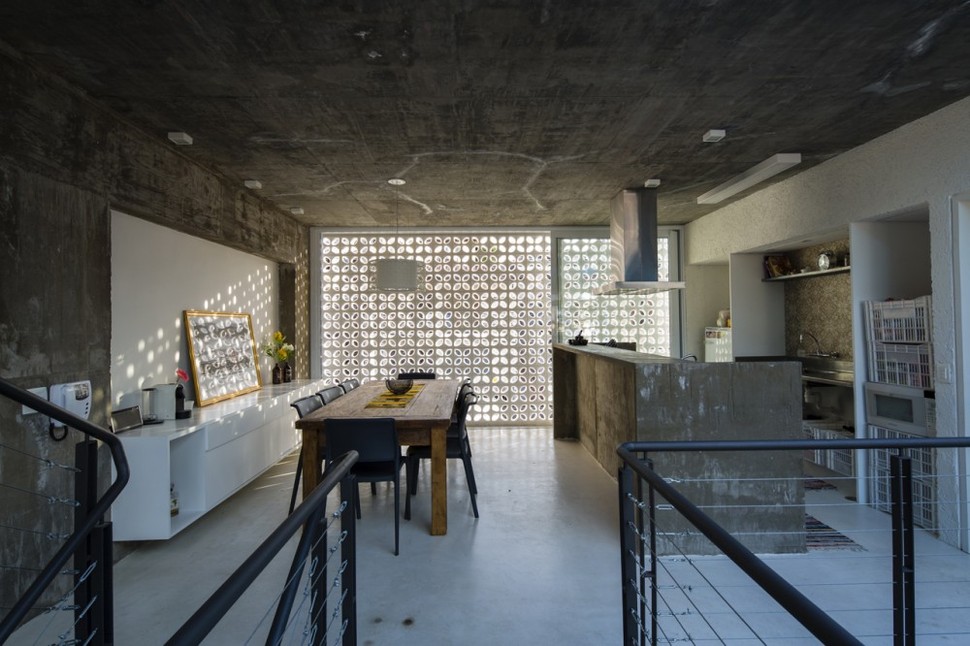
The kitchen arguably has the prolific use of unfinished concrete in the house; even the main countertop is made of the same material seen on the ceiling and one wall. However, white pieces like the floating cabinets and unique patterned front wall keep the area from seeming industrial or uninviting.
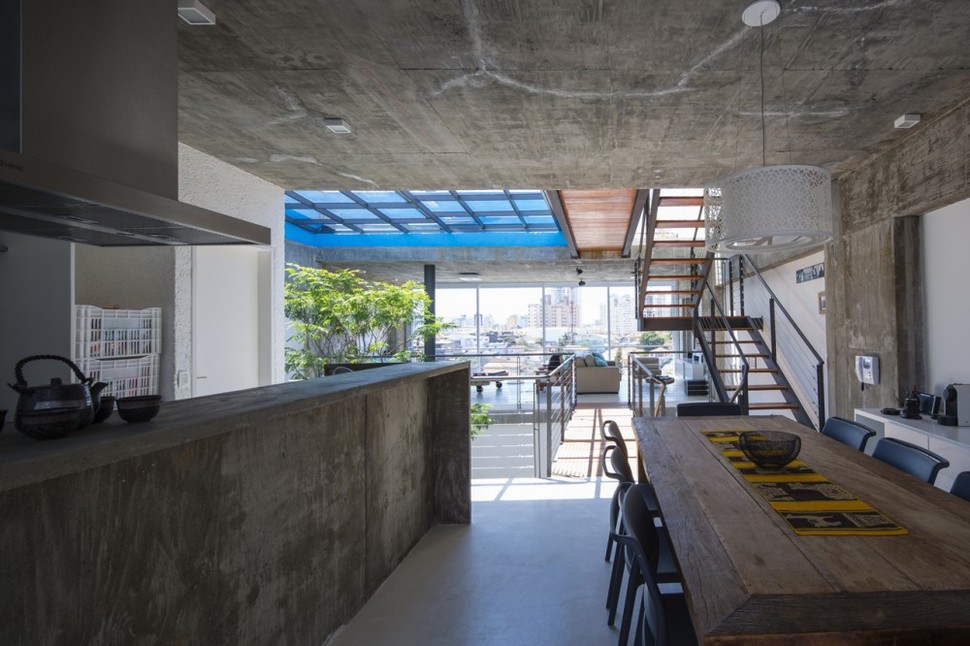
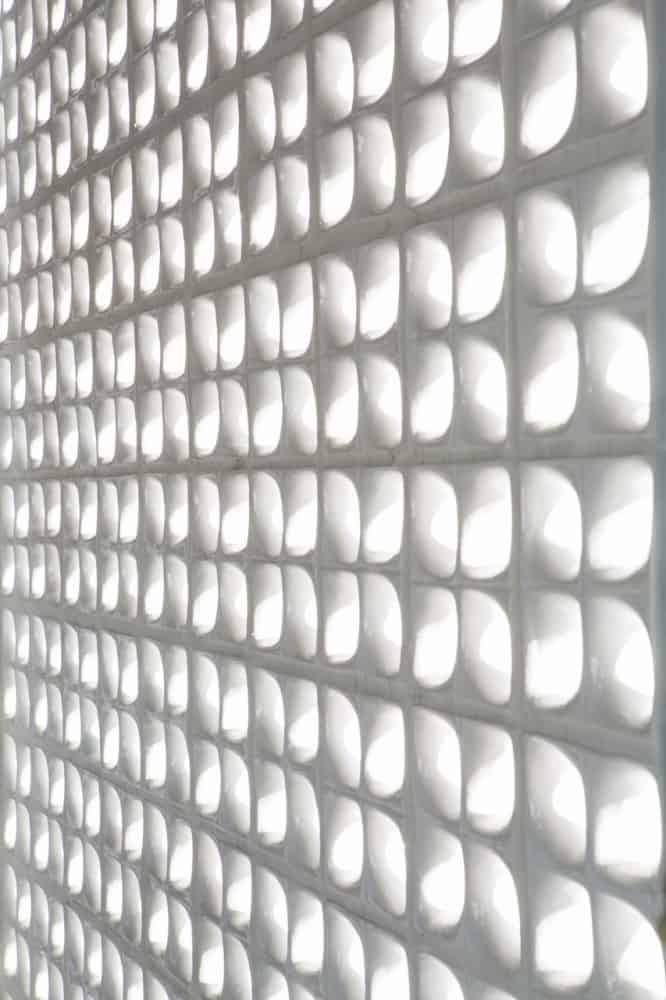
The floral lattice borders the front of the home, letting in just enough light for the mood of a room like the kitchen.

An open section of roof makes the third floor even more open than the first and second, a perfect area for entertaining guests. This level also has commanding, unobstructed views of the rest of the house below off the bridge or the railings of the kitchen or living room.
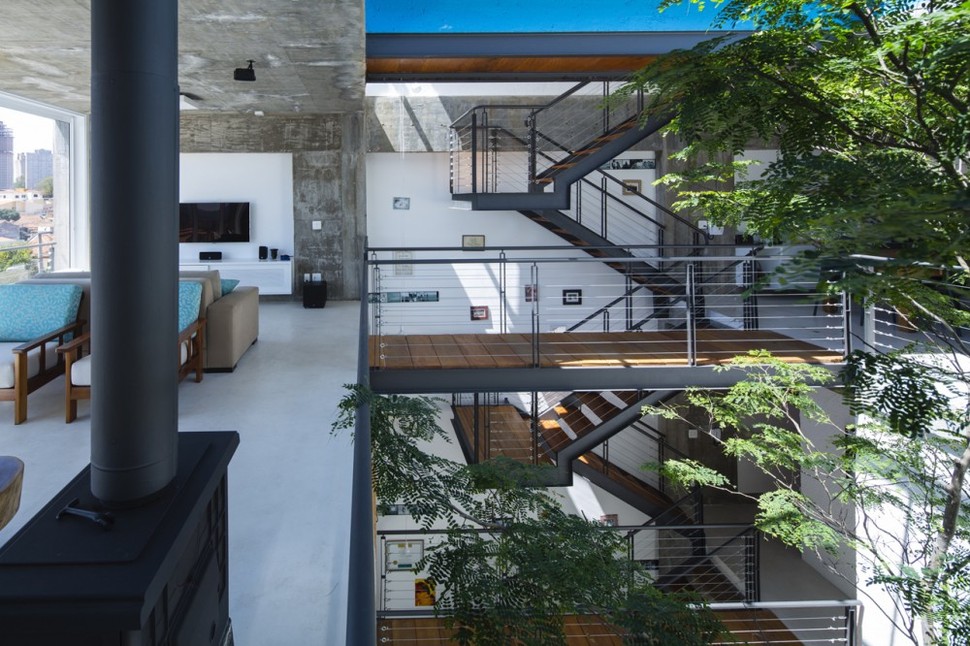

From the living room, residents and guests alike enjoy sweeping views of the lower-built and more traditional neighborhood around the house while enjoying warmth from an antique-style furnace along the railing edge. Despite the concrete room borders as seen elsewhere, the living room’s soft furniture colors and familiar decor elements help make it a more intimate space.

A final two flights lead up to the very top of the building, which includes a social space, an outdoor deck complete with eating area, and utilities.
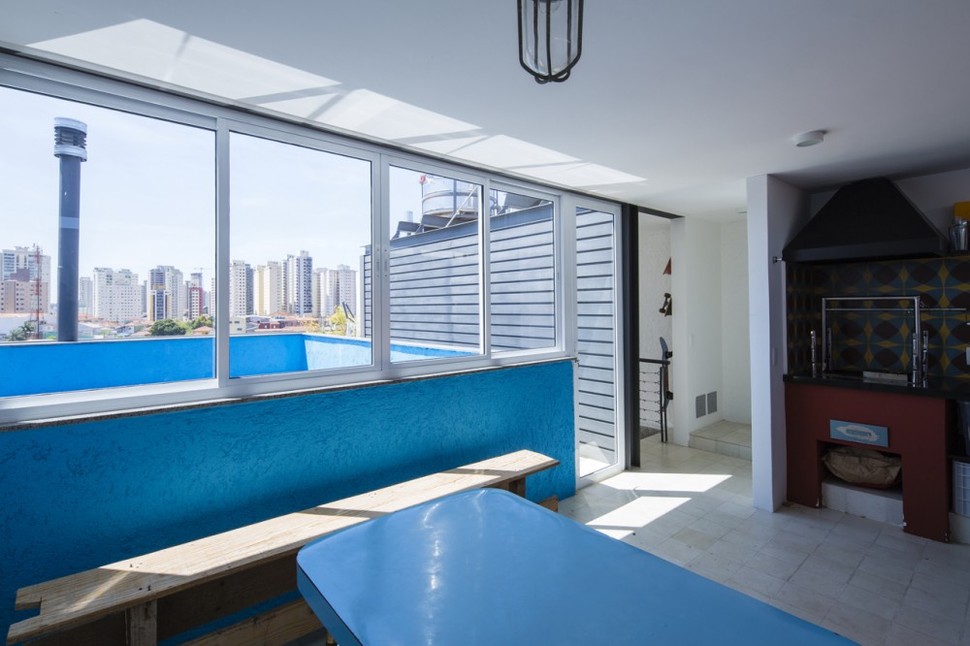
The color palette up here is a bright-social blue, and the upper room is formatted to be a configurable hosting area instead of any defined sort of space. A small kitchen area eliminates the need for trips downstairs for simple foods.

Beyond the top room and the skylight over the home’s courtyard is a railed-in roof deck, complete with small garden plots around each railing for the planting of sky-high greenery. Like the room nearby, the deck is kept open to be configurable for any outdoor situation.




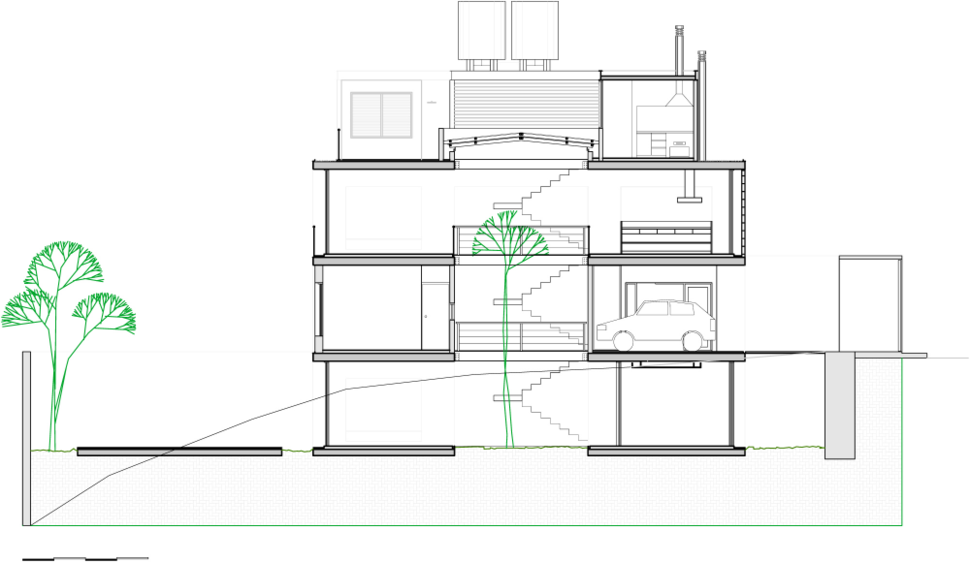
Arquitetura Bonina
